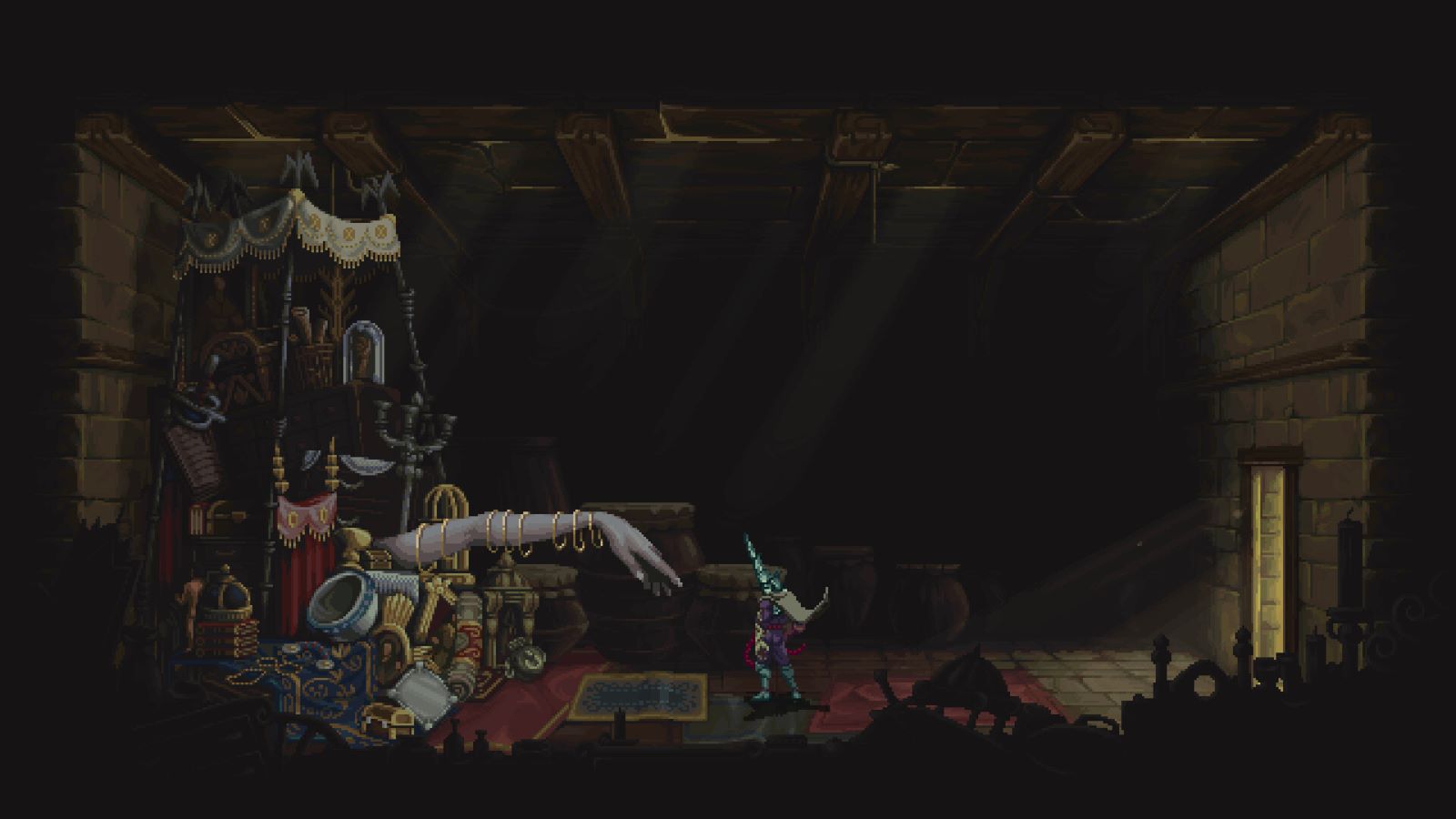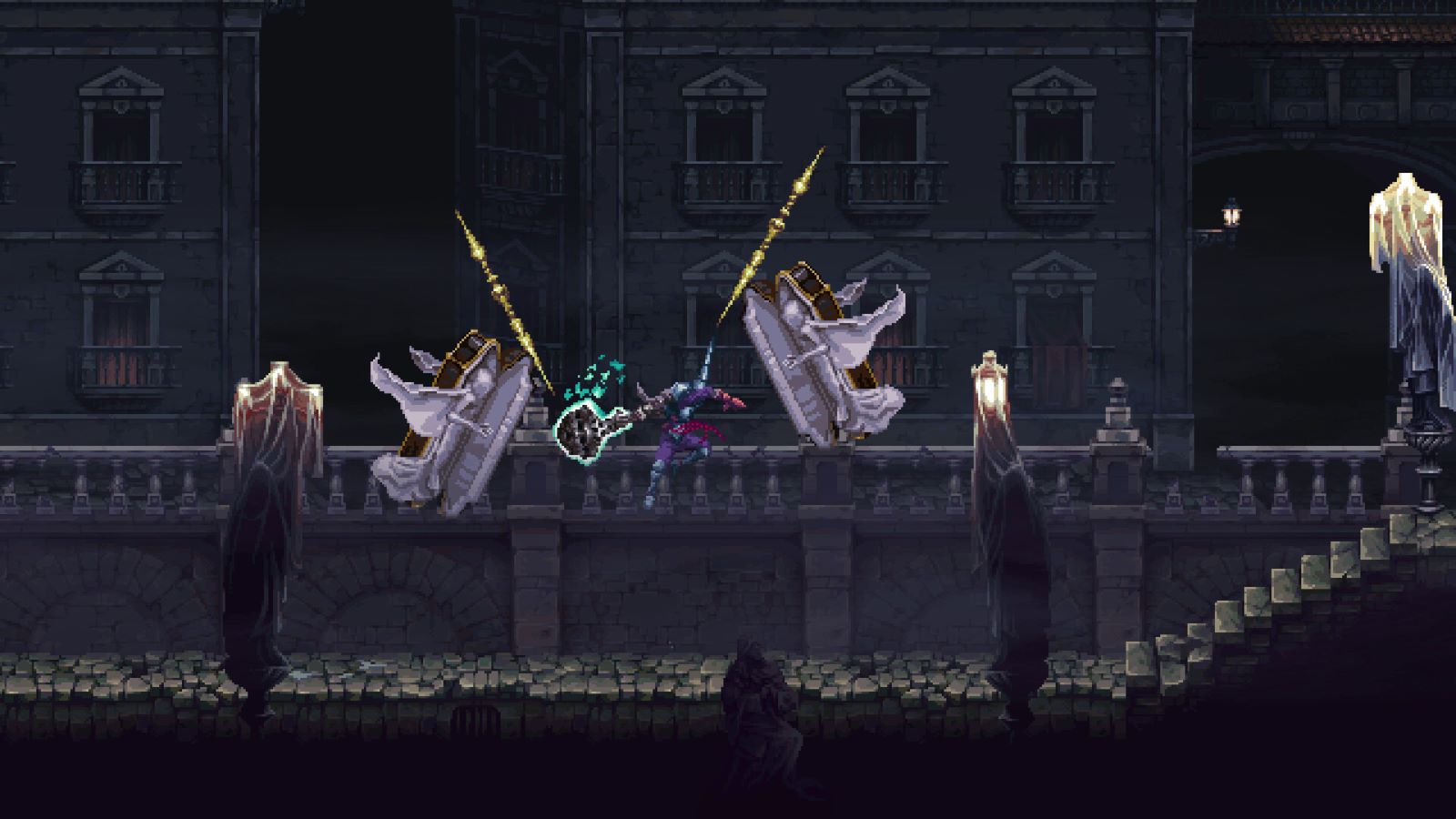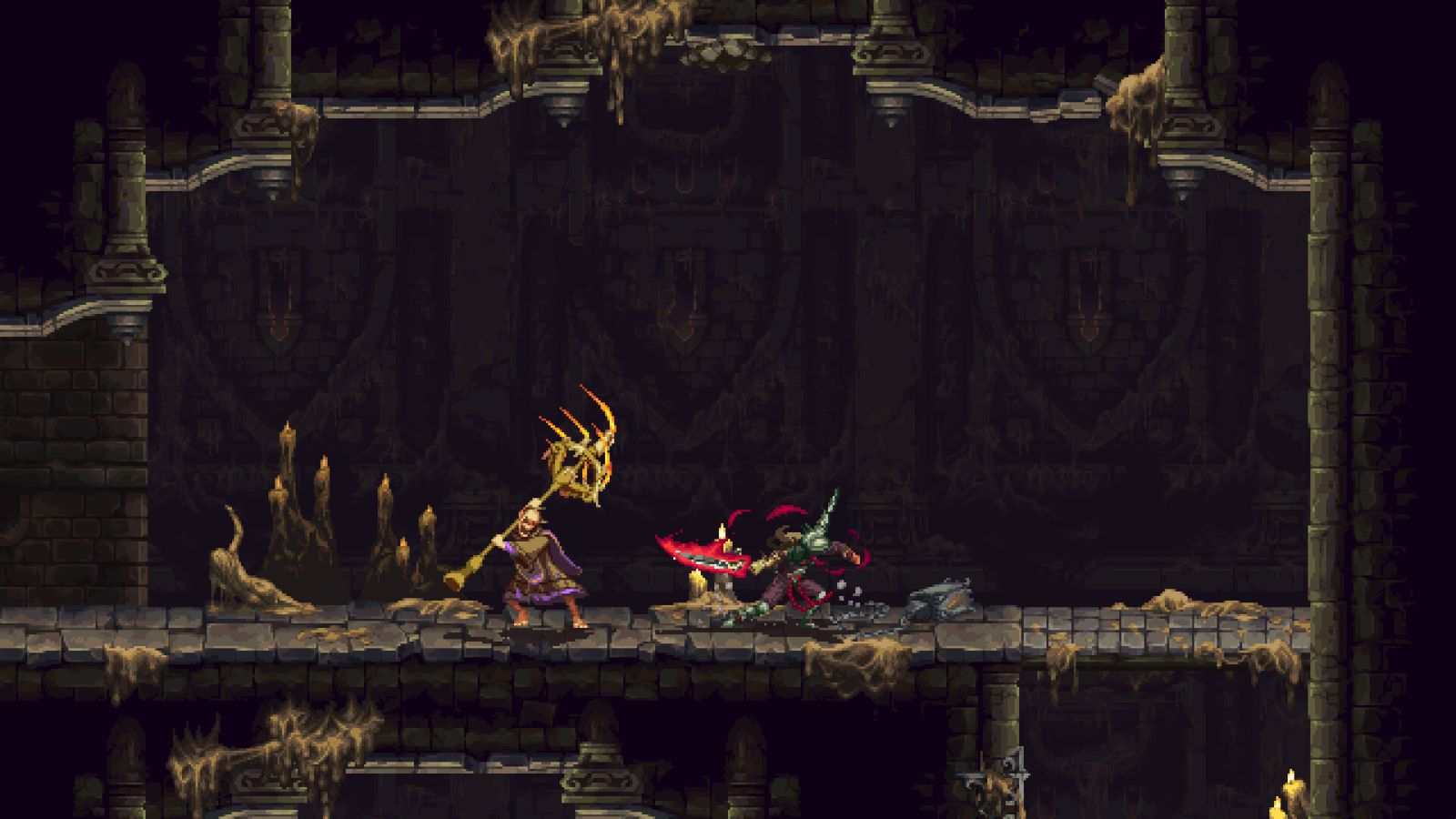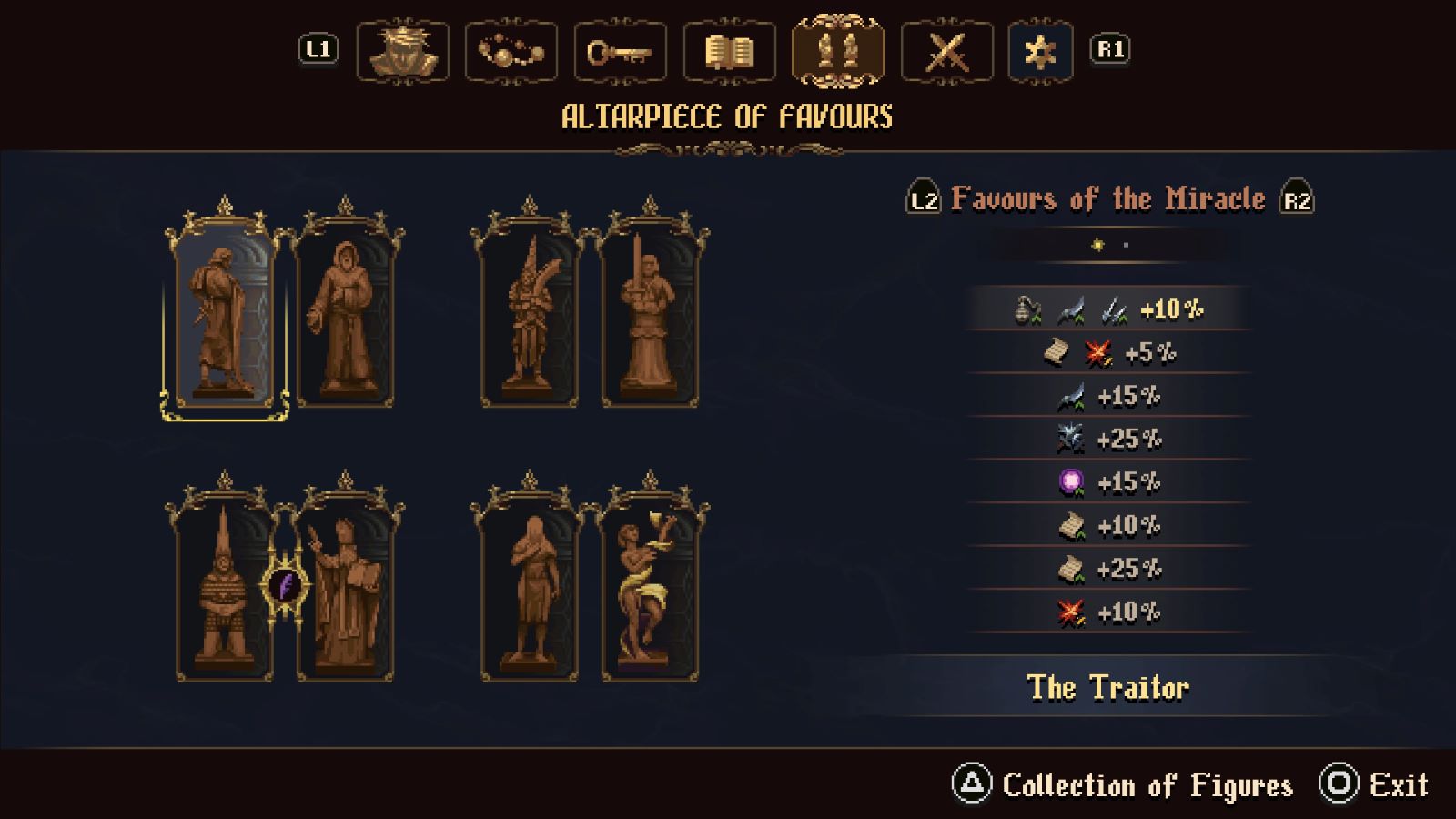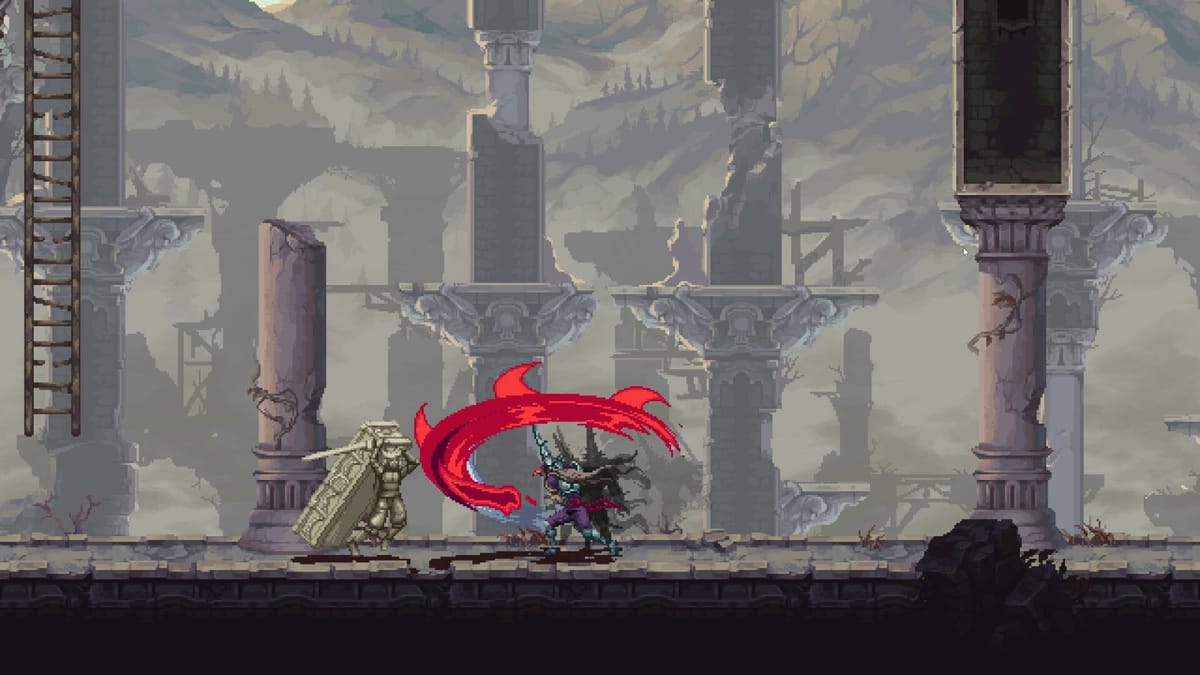
Blasphemous launched as a stand-out Metroidvania title in 2019 for its rich lore, satisfying combat, and precise platforming areas. Its dark tone and brutal imagery linger with you after completing the game. I enjoyed my time with it, and when the trailer for Blasphemous 2 dropped a few months back, it was time to dawn The Pentinant One again.
After completing my playthrough, which took around 21 hours, minor aspects changed, but overall most gameplay components will feel familiar. The narrative isn’t front and center with the meat of the story hidden behind lore entries on items scattered throughout. The gameplay still primarily leans into hack-and-slash Metroidvania with some elements borrowed from the Souls franchise. Save points are only available via Prie Diues or their version of bonfires notorious in FromSoftware games. Visually and artistically, the harrowing themes infamous to Blashpemous continue where the game left off. So will this be enough to elevate the franchise to new heights, or will the experience be a regrettable sense of deja vu? Let’s dive in.
Everything begins with the Pentinant One’s renewed life, witnessing the arrival of the City of the Blessed Name and the ominous heartbeat amongst the clouds above. We soon learn ‘The Miracle’ also returns to play a vital role as it will soon give birth to a child. Tasked by an angelic figure named Anunciada, our pilgrimage is to seek out its guardian sentinels and defeat them.
Playing the first game, while not a requirement, is recommended. The themes, dialogue, and iconography can be jarring for someone hopping on board the franchise for the first time. There is no detailed structure to how you’ll need to approach the game’s main quest. You can choose which path to pursue and feel no rush to complete the story before adventuring on side quests. Many of the side quests are hidden and need to be discovered, with the excitement of accidentally encountering them driving the desire to explore.
The main narrative paired with side quests does an admirable job of setting up the lore and backdrop of the City and its citizens, but the heart of the world lies in the lore tabs attached to items you’ll pick up. In this design, you feel drawn to find, explore, and collect everything because the stories and events transcribed are more detailed than the simple character interactions you’ll encounter on your pilgrimage. Overall, it’s a complex storyline interweaved into an enriched world that many players may miss out on.
The biggest change players will notice is the addition of three new weapons you can freely swap between. A light but fast rapier, a slow but brute mace, and a balanced but swift sword enhance the approach to dealing with minor enemies and give individually shining moments in boss fights. The weapons are upgradeable, with each tier significantly increasing the usability and potency while staying in line with each weapon’s identity and playstyle. They also assist in puzzle solving as specific spots on the map require you to use a corresponding weapon to trigger a catalyst, thus unlocking hidden items and areas. For being the primary way you’ll fight, the new additions feel satisfying to use and offer depth through upgrading to enhance a power fantasy missing from the first game.
Slicing and dicing isn’t the only way to take out enemies. Two forms of prayer fill the role of special attacks in your arsenal. As you land physical hits on enemies, you gain Fervour which can be consumed to produce these attacks. Quick verses require less Fervour but deal less damage per attack while longer prayers or chants use more and deal either higher burst damage or damage over time. Slotting out different ones to try out was a lot of fun. Dishing out differing elemental damage like fire or mystical is a good feature, but applying one over the other never felt advantageous. Having specific enemies be more vulnerable to certain elements might’ve been present in the game, but it wasn’t explained nor felt like it was there.
As I said before, some components from the first game are present. You still replenish a portion of health via Bile Flasks when consumed. Rosary Beads can be found to provide elemental defense boosts or hints to secret pathways. New to Blaspehmous 2, though, are Altarpieces of Favours. These are collectible figures obtained via hidden chests and side quests that boost a variety of stats. I loved searching for and collecting these specifically, as creating unique builds for boss fights based on weapon and Altarpiece synergy helped me discover my way to defeat them.
The map expanded a lot more than I had first anticipated. Each area’s theme coincided with quests in that section, including the boss encounters. The root-like system of interlocking rooms and pathways honestly became an addiction to explore. The overview is helpful as you see what direction leads to new spaces and what is a dead end. Like me, most players will spend their playtime exploring, so an excellent implementation of a Metroidvania map is necessary.
Veterans of the first game will notice some enemies made a return alongside brand-new ones. The biggest problem is each enemy only uses one repeated attack. It was fun initially seeing what each would do, but afterward, they were simple to dispatch. The boss encounters, however, tested everything from my mental patience to my weapon builds to my positioning and timing. Individually they came with engaging mechanics and attacks, and you can feel their personalities in, which I don’t see often. I loved every encounter I came across, even if some of the mid-game bosses were less difficult. Sadly, the game’s difficulty peaks at the beginning and ending while the middle sections dialed it down. Games shine with a constant increase in difficulty as defeating the penultimate boss leaves players feeling like they’ve ascended a mountain to its summit.
This game is visually brutal in such a unique and creatively brilliant way. The pixelated art, character sprites, boss designs, and themes are some of the craziest ones I’ve encountered recently. The soundtrack is outstanding and harmonizes with each narrative moment the studio wants players to experience. Few games possess an artistic style like the Blasphemous series.
Overall Blasphemous 2 keeps things pretty close to home, but that’s not necessarily a weak point. The formula they found from their original title checks many of the boxes required for a fun and memorable adventure. Their second outing is all those things but doesn’t do much to innovate or push the genre forward otherwise. With that said the Game Kitchen produced a hauntingly fun time.
Blasphemous 2
Great
Blasphemous 2 continues the achievements set by its predecessor while adding three new ways to fight. Not straying outside the lines, Blasphemous 2 is simply more Blasphemous at the end of the day.
Pros
- Phenomenal Artistic Style
- Dynamic Boss Fights
- 3 New Weapons to Use
- Map Exploration Is Fun and Addictive
Cons
- Lack of Variety in Regular Enemy Attacks
- Played Things Safe When Expanding to A Sequel

